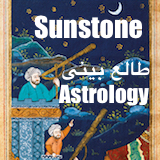Why Christian Converts Flee Iran
A Story of Faith, Suffering, and Resistance
By Fred Petrossian
Fred Petrossian is the founder and editor of Nvoicesiran and a collaborator with Article 18, a Christian human rights advocacy organization. As a veteran journalist and researcher, Fred has an extensive background in media, human rights reporting, and digital activism. He previously served as the Iran Editor at Global Voices, co-founded the award-winning March 18 Movement, which supported persecuted bloggers. Fred was also the Online Editor-in-Chief of Radio Free Europe’s Persian service. Additionally, he co-edited and co-authored Hope, Votes, Bullets, a book analyzing Iran’s Green Movement.
Preface: No Need for a Crystal Ball
To foresee the future of many children born in Iranian hospitals, one does not need a crystal ball. Their fate under the Islamic Republic is shaped by systemic discrimination and deeply ingrained inequality.
Children born into families belonging to persecuted and marginalized faith communities–whether Christian, Bahá’í, Jewish, Zoroastrian, Sunni, Dervish, Mandaean, or Yarsani–as well as those facing discrimination for their gender or ethnicity, such as girls and women or ethnic Baloch, are subjected to systemic discrimination from birth. Branded as second- or even third-class citizens, they are stripped of fundamental human and civil rights, with limited access to education, employment, and other social opportunities. For many, this injustice persists unless they suppress their religious, cultural, or personal identity to conform to the state’s rigid ideological framework.
This widespread marginalization can only be described as the ‘democratization of repression,’ in which vast segments of Iranian society are condemned to lives of inferiority.” From the classroom to the workplace, individuals encounter a system that enforces this inequality at every stage of life.
For Christian converts, the outlook is especially grim. They risk being labeled najis (unclean), imprisoned, denied access to higher education and work, or forced to flee their homeland. This pervasive system of religious apartheid affects millions of people, with each community enduring its own form of oppression. Yet, their stories are also accounts of extraordinary resilience, resistance, and hope.
In Iran, those stripped of their rights due to their identity or beliefs are not merely minorities; they are persecuted communities. This persecution extends beyond non-Muslim minorities, targeting groups such as the Gonabadi Dervishes–Shiites whose interpretation of Islam diverges from the ruling theocracy–and Sunnis, who remain marginalized.
Among these communities, Christian converts stand out as a growing phenomenon. They represent a new religious minority, emerging in significant numbers since the Islamic Revolution. In defying the regime’s ideological expectations, they challenge the state’s authority and signal a profound transformation within Iranian society.
Christian converts are among the most dynamic and active communities in Iran. Many are deeply involved in movements for freedom and justice, such as Woman, Life, Freedom. Their struggle for religious rights is intertwined with the broader fight for liberation and equality across Iran. Together, they embody the hope that what seems like a doomed destiny can, in fact, be rewritten.
Introduction
The Islamic Republic of Iran, established in 1979, has consistently implemented policies that marginalize and persecute religious minorities. This systematic oppression has been particularly severe for groups not officially recognized by the Constitution, such as individuals who convert from Islam to Christianity.
Over the past four decades, these converts have faced increasing pressure, leading many to decide to flee their homeland.
This book explores the various factors that compel Christian converts from Muslim backgrounds in Iran to emigrate.. By analyzing the multifaceted persecution these individuals face–including cultural, structural, and physical forms of violence–it sheds light on the lived experiences of these converts and their struggle for religious freedom.
The Islamic Republic state’s role in institutionalizing discrimination against religious minorities, particularly targeting non-recognized groups like Christian converts, is explored through a comprehensive analysis of personal testimonies, academic literature, and human rights reports.
This investigation focuses on several key aspects: the historical and legal context of Christianity in Iran; the various forms of persecution experienced by converts, including social ostracism, economic discrimination, legal challenges, and physical threats; and the strategies employed by the Iranian government to suppress religious conversion and the practice of non-recognized faiths. The immediate and long-term consequences of this persecution on individuals and communities are considered, including impacts on mental health, family dynamics, and social cohesion.
Furthermore, the book highlights the resilience and resistance efforts of Christian converts, illustrating how they navigate their faith in a hostile environment. It also examines the challenges faced by those who emigrate, including the process of seeking asylum and adapting to life in new countries.
Iran has ratified the International Covenant on Civil and Political Rights and the International Covenant on Economic, Social, and Cultural Rights without reservations, committing itself to the protection and promotion of civil, political, economic, and social rights, including freedom of expression, assembly, association, and religion.3 However, the Islamic Republic’s actions stand in stark violation of these international human rights obligations, perpetuating the persecution that compels many to flee.










Comments